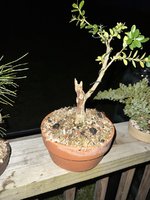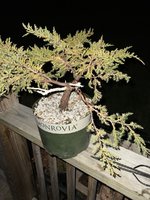Wild&Wonderful
Seedling
I’ve been practicing bonsai and collecting yamadori/nursery material for the last couple of years. All of my trees are in development. There are no clubs or shows that happen locally, so I was wondering if there were more bonsai practitioners out there in the southern WV area? Would really like to see a local community develop!
Here are some pics just for fun, critique/questions are welcome!
Here are some pics just for fun, critique/questions are welcome!




